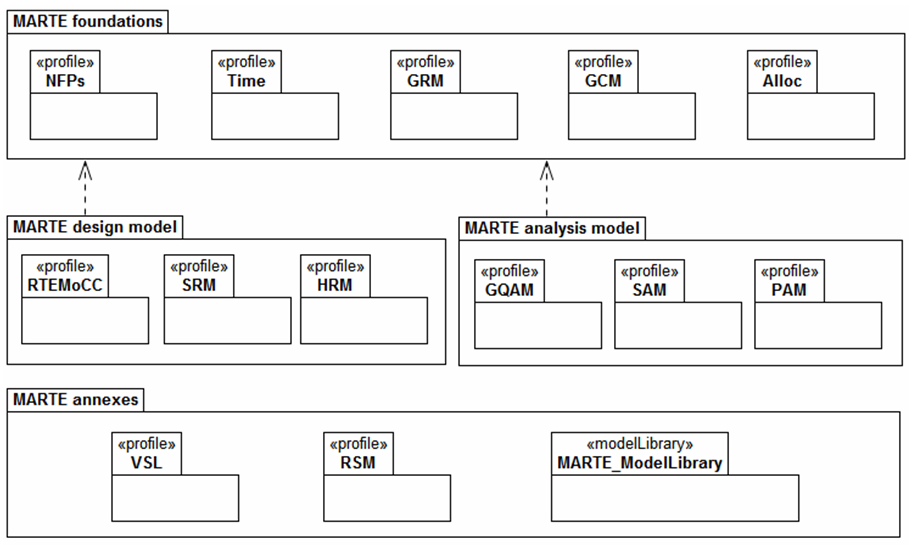About MARTE Specification
This specification of a UML® profile adds capabilities to UML for model-driven development of Real Time and Embedded Systems (RTES). This extension, called the UML profile for MARTE (in short MARTE), provides support for specification, design, and verification/validation stages. This new profile is intended to replace the existing UML Profile for Schedulability, Performance and Time (formal/03-09-01).
MARTE consists in defining foundations for model-based description of real time and embedded systems. These core concepts are then refined for both modeling and analyzing concerns. Modeling parts provides support required from specification to detailed design of real-time and embedded characteristics of systems. MARTE concerns also model-based analysis. In this sense, the intent is not to define new techniques for analyzing real-time and embedded systems, but to support them. Hence, it provides facilities to annotate models with information required to perform specific analysis. Especially, MARTE focuses on performance and schedulability analysis. But, it defines also a general framework for quantitative analysis which intends to refine/specialize any other kind of analysis.
Among others, the benefits of using this profile are thus:
- Providing a common way of modeling both hardware and software aspects of a RTES in order to improve communication between developers.
- Enabling interoperability between development tools used for specification, design, verification, code generation, etc.
- Fostering the construction of models that may be used to make quantitative predictions regarding real-time and embedded features of systems taking into account both hardware and software characteristics.
The profile is structured around two concerns, one to model the features of real-time and embedded systems and the other to annotate application models so as to support analysis of system properties. These are shown by the MARTE design model package in following figure, and the MARTE analysis model package, respectively. These two major parts share common concerns with describing time and the use of concurrent resources, which are contained in the shared package called MARTE foundations. A fourth package contains the annexes profiles defined in MARTE, as well as a predefined model libraries that may used by modelers to denotes their real-time and embedded applications.

Figure 1
Architecture of the MARTE profile (NFPs = Non-Functional Properties , GRM = Generic Resource Modeling, GCM = Generic Component Model, Alloc = Allocation modeling, RTEMoCC = RTE Model of Computation & Communication, SRM = Software Resource Modeling, HRM = Hardware Resource Modeling, GQAM = Generic Quantitative Analysis Modeling, SAM = Schedulability Analysis Modeling, PAM = Performance Analysis Modeling, VSL = Value Specification Language, RSM = Repetitive Structure Modelling)